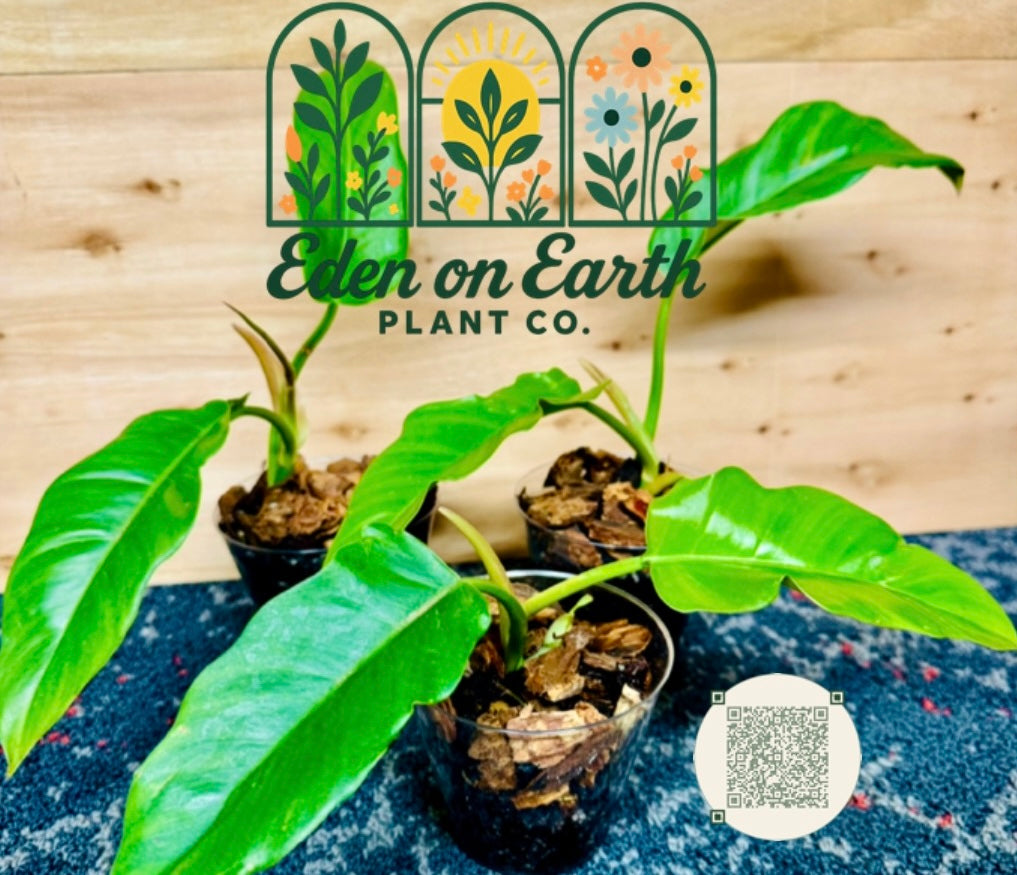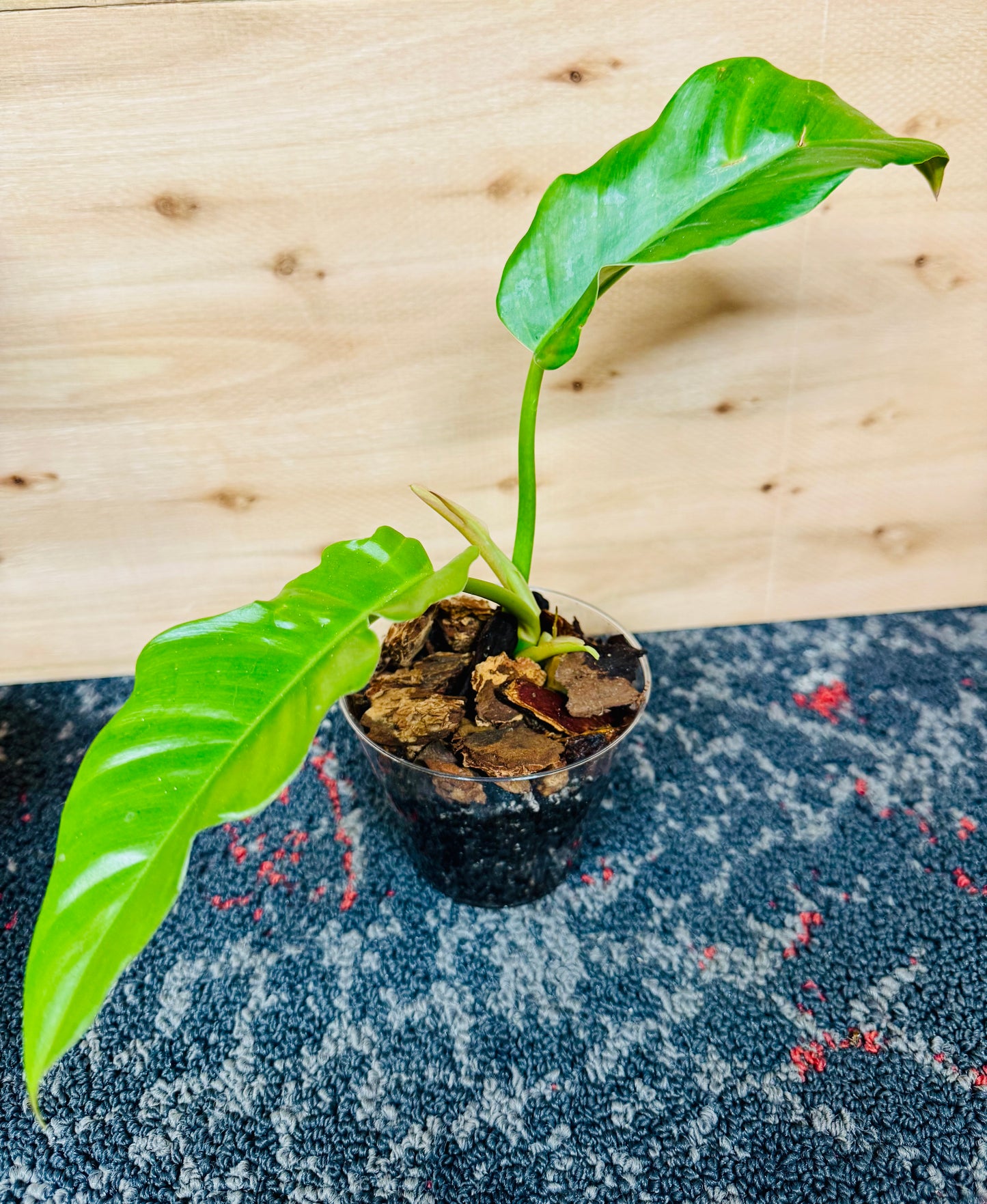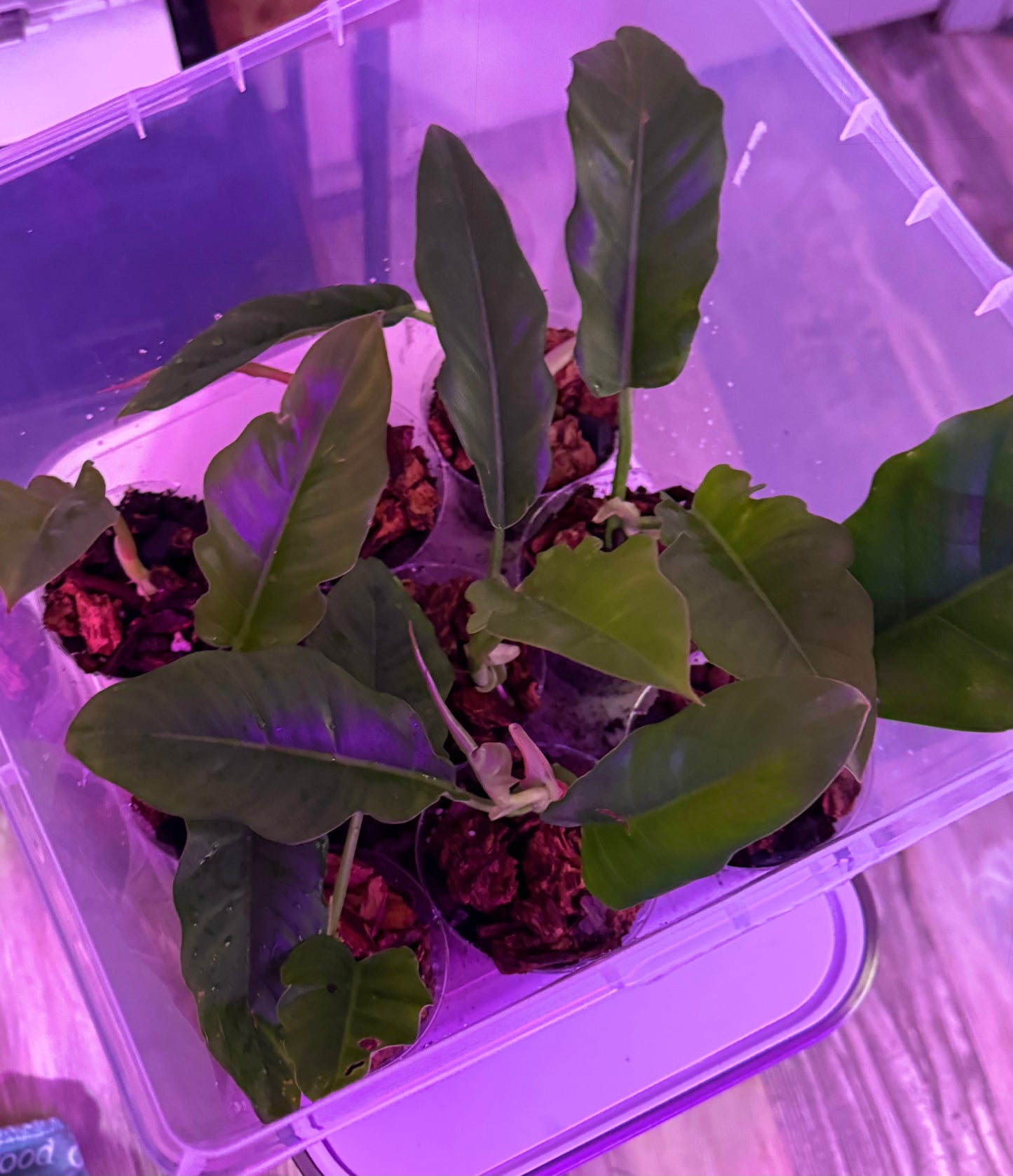Eden on Earth
Philodendron Jungle Boogie - Rooted Starters
Philodendron Jungle Boogie - Rooted Starters
Couldn't load pickup availability
The Ultimate Guide to Philodendron 'Jungle Boogie' Care
The Philodendron 'Jungle Boogie', also known by its fun synonym Philodendron 'Tiger Tooth', is a stunning and relatively easy-to-care-for houseplant celebrated for its long, narrow, saw-toothed leaves. This guide will provide you with all the information you need to help your plant not just survive, but thrive.
1. Understanding Your Plant
• Scientific Name: Philodendron bipennifolium 'Jungle Boogie'
• Origin: This is a hybrid plant, but its parent species are native to the tropical rainforests of South America. This is the most important clue to its care: it wants warmth, humidity, and dappled light, just like it would get under a rainforest canopy.
• Growth Habit: It's a climbing philodendron. In its natural habitat, it would vine its way up tree trunks. In your home, it will appreciate a moss pole or trellis to climb, which will encourage larger, more mature leaves.
2. Core Care Requirements
💡 Light
This is the most critical factor for success.
• Ideal: Bright, indirect light is the gold standard. This means a spot near an east-facing window, or several feet back from a south or west-facing window. The goal is to provide several hours of light that is bright enough to read a book in, but not so intense that the sun's rays are directly hitting the leaves.
• Too Little: If the light is too low, the plant will become "leggy." This means the stems will be long and stretched out with sparse leaves, as the plant is reaching for more light. Growth will be slow and the leaves may be smaller.
• Too Much: Direct, harsh sunlight will scorch the leaves, leaving behind brown, crispy patches or causing the vibrant green color to fade to a washed-out yellow.
💧 Watering
Overwatering is the most common way people harm their philodendrons.
• When to Water: Water when the top 1-2 inches of soil feel dry to the touch. The best way to check is to stick your finger directly into the soil.
• How to Water: When it's time, water thoroughly until you see excess water run out of the drainage holes at the bottom of the pot. This ensures the entire root ball gets a drink. Discard any water left sitting in the saucer to prevent the roots from sitting in water, which leads to root rot.
• Frequency: The frequency will change throughout the year. You'll water more often during the spring and summer growing season and less frequently in the fall and winter when the plant's growth slows down.
🌱 Soil
'Jungle Boogie' needs a soil mix that is airy and drains well to mimic the forest floor.
• Perfect Mix: A high-quality, chunky aroid mix is best. You can buy these pre-made or create your own by combining:
• 1 part standard potting mix
• 1 part orchid bark
• 1 part perlite
• Why it Works: This combination provides nutrients (potting mix), allows for large air pockets for the roots to breathe (orchid bark), and ensures excellent drainage to prevent waterlogging (perlite).
🌡️ Temperature & Humidity
Think warm and steamy rainforest.
• Temperature: Ideal temperatures range from 65-80°F (18-27°C). It can tolerate slightly cooler temperatures, but avoid anything below 55°F (13°C). Keep it away from cold drafts, open windows in winter, and air conditioning vents.
• Humidity: 'Jungle Boogie' thrives in above-average humidity (above 50%). If your home is dry, you can easily increase humidity by:
• Placing the plant near a humidifier.
• Grouping it with other plants (they release moisture through transpiration).
• Placing it on a pebble tray (a tray filled with pebbles and water; the evaporating water adds moisture to the air).
3. Growth and Maintenance
🌿 Fertilizing
During the active growing season (spring and summer), feed your plant to support its growth.
• What to Use: A balanced liquid fertilizer, diluted to half-strength.
• How Often: Apply every 4-6 weeks with your regular watering.
• Important: Do not fertilize in the fall and winter when the plant is dormant. Fertilizing a dormant plant can burn its roots.
🧗♀️ Support and Training
As a natural climber, providing support is highly recommended.
• Benefits: Giving your 'Jungle Boogie' a moss pole, coir pole, or trellis to climb will encourage it to produce larger, more mature leaves and create a more impressive, vertical specimen.
• How to Do It: Gently secure the main stems to the support using plant ties or clips. As it grows, the aerial roots will eventually latch on themselves.
✂️ Pruning
Pruning is not essential but can be done to shape the plant or control its size.
• When: The best time is in the spring.
• How: Use clean, sharp scissors or pruning shears to trim off any yellow or dead leaves. You can also prune back long vines to encourage a bushier, fuller appearance.
🪴 Repotting
Repot every 1-2 years, or when you notice it's become root-bound.
• Signs it's Time: You see roots growing out of the drainage holes, or the plant is drying out much faster than it used to.
• Choosing a Pot: Select a new pot that is only 1-2 inches larger in diameter than the current one. A pot that is too large will hold excess soil and moisture, increasing the risk of root rot.
4. Troubleshooting Common Issues
• Yellow Leaves: Usually a sign of overwatering. Check the soil moisture and allow it to dry out more between waterings.
• Brown, Crispy Leaf Edges: The air is likely too dry. Increase humidity using the methods mentioned above.
• Pests: Inspect your plant regularly for common pests like spider mites, mealybugs, and scale. If you spot any, isolate the plant and treat it with an insecticidal soap or neem oil solution.
• Drooping Leaves: Can be a sign of both overwatering and underwatering. Check the soil! If it's bone dry, give it a good drink. If it's soggy, you may have root rot and need to check the health of the roots.
⚠️ A Note on Toxicity
Like all philodendrons, the 'Jungle Boogie' is toxic to cats, dogs, and humans if ingested. Keep it out of reach of curious pets and children.






